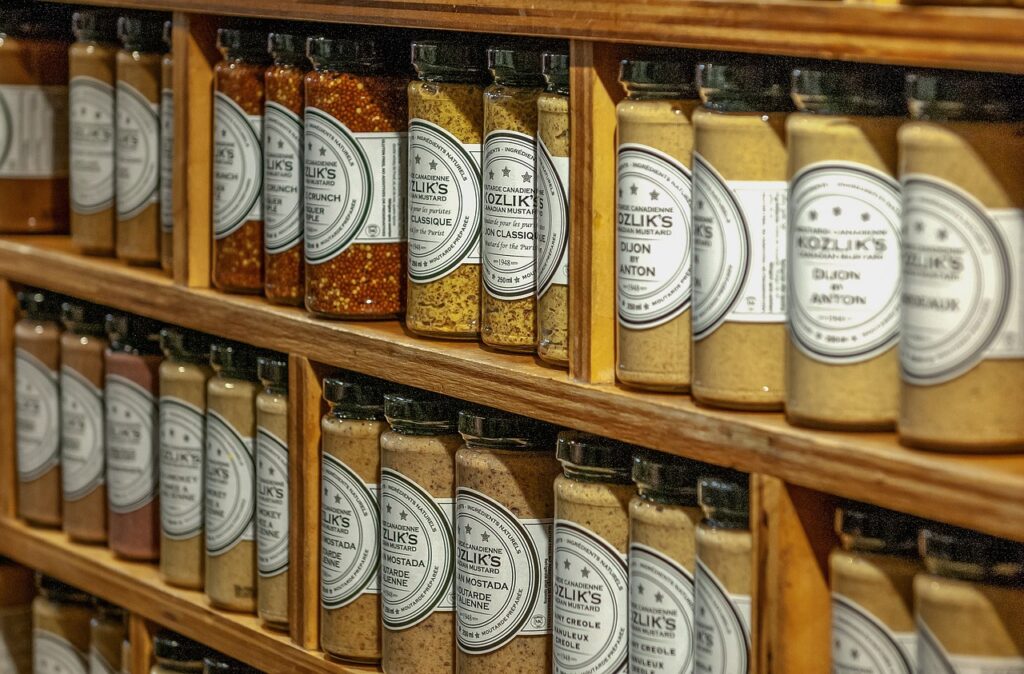How to Sell a Product to a Grocery Store

How to Sell a Product to a Grocery Store
Introduction
Selling to a grocery store can be an excellent way to reach more customers and build a strong brand presence. But it’s essential to approach it right, as grocery stores have specific requirements and expect a solid pitch.
This step-by-step guide will help you get your product on their shelves efficiently.
Understand Your Target Stores and Customers
Before reaching out to grocery stores, start by researching which stores align with your product and target audience.
Identify the Right Stores: Focus on stores that already carry products similar to yours or serve the audience you want to reach. If you’re selling a unique and relatively expensive snack, upscale grocery chains or stores with specialty sections may be the best fit. On the other hand, everyday items might perform well in middle ranking supermarkets or local stores.
Analyze Customer Preferences: Visit the stores you’re targeting, observe what is popular, and identify competitors. This information helps you understand what sells in their environment and provides clues about how your product could fit in.
Create a Compelling Product Story
Your product’s story can be a strong selling point, especially if it shows its unique qualities, such as sustainability, health benefits, or local origins. Grocery stores look for products that align with current trends, so emphasize what makes your product special.
Whether it’s locally sourced ingredients, an all-natural recipe, or a commitment to sustainability, make sure these details are front and center. If you’re selling a Nigerian product, for instance, emphasize how it represents authentic flavors or ingredients that customers may not find elsewhere.
Also, if your brand has a particular mission, maybe like supporting local farmers or promoting health-conscious eating, you can use this to help create a relatable story. A strong mission helps you connect with the store’s values and resonate with their customer base.
Develop an Impressive Packaging
Packaging is critical in grocery retail, as it is the first thing customers see. Make sure your packaging stands out on the shelf and communicates essential information clearly.
Invest in professional, high-quality packaging that reflects your brand’s style. It should be visually appealing and capable of standing out among competitors.
Clearly state the product’s benefits, ingredients, and any certifications like “organic,” “non-GMO,” or “locally produced.” This helps customers quickly understand why they should choose your product.
Additionally, think about how your product looks in a lineup with others. Test different color schemes or layouts to ensure your product is easy to spot on the shelf.
Prepare for Your Pitch with Solid Numbers and Market Data
Grocery stores want products that sell well, so show that your product has demand and potential.
- Demonstrate Market Potential: Share data that highlights the demand for your type of product. For instance, if you’re selling a health-focused snack, bring statistics showing increased consumer interest in healthy foods.
- Showcase Sales Metrics: If you already have sales data from online stores or smaller shops, share these numbers to demonstrate your product’s popularity. Even local sales data can prove valuable.
- Include Customer Testimonials or Press Mentions: If your product has positive reviews or mentions in the media, this can be powerful proof of demand. Testimonials help assure grocery buyers that customers already like your product.
Offer Competitive Pricing and Terms
Pricing is a deciding factor for most grocery stores, so ensure you provide competitive, fair pricing that fits their requirements.
Calculate wholesale and suggested retail Price. Set a wholesale price that allows the store to make a good profit while keeping your product affordable.
Be transparent about costs by presenting a clear cost breakdown to build trust. Explain your product’s value and why your pricing is justified, particularly if it’s higher than similar items.
Offer flexible payment terms as some stores prefer flexible payment options, especially when starting with new suppliers. Offering 30-day payment terms, for example, can be a goodwill gesture that makes your offer more attractive.
Schedule a Meeting with the Store’s Buyer
Once you’re prepared, reach out to the store’s buyer or category manager to schedule a meeting. Make sure you’re reaching out to the right person—often a grocery’s website or customer service team can help you identify them. Consider the following:
- Reach Out with a Strong Introduction: In your initial email or call, briefly introduce yourself, describe your product, and explain why it’s a good fit for their store.
- Request a Short Meeting: Buyers are busy, so aim for a concise, 15-20 minute presentation. Offering free samples of your product can increase your chances of securing an in-person meeting.
- Be Ready for Objections: Prepare answers for common questions or concerns, such as “What makes your product different?” or “How does your price compare to similar items?”
Present Your Product Effectively
Once you’re in the meeting, use it to showcase your product’s value and appeal, focusing on how it will benefit the store.
Emphasize the qualities that make your product a good match for their store and customers. Whether it’s the product’s high quality, unique flavor, or health benefits, highlight why customers would choose it over others.
Let the buyer experience the product firsthand. Bring samples, high-quality images, or display examples showing how it would look on the shelf.
Show that you’re willing to invest in promoting your product. Mention plans for promotions, social media campaigns, or product demos, which can help attract customers to the store.
Negotiate Terms and Agreements
If the store is interested, be ready to negotiate terms that work for both sides. Discuss factors like pricing, delivery schedules, and return policies.
Agree on ordering and delivery. Confirm the quantity of the first order and decide on delivery timelines. Some stores prefer regular shipments, while others may want to test a small quantity first.
Discuss Placement and Promotion Options: If possible, ask about product placement on shelves or participation in store promotions. Some stores offer end-cap displays or spots near checkout areas for new products.
Clarify Return Policies: Check if the store expects you to take back unsold products or if they cover returns themselves.
Support Your Product Post-Launch
Your work doesn’t end once the product is on the shelf. Supporting your product in-store can help drive sales and build a positive relationship with the store.
If the store permits, in-store tastings or demonstrations can help customers experience your product firsthand, which often drives sales.
Announce on your social media channels that your product is available in the store. Encourage your followers to visit the store, and tag the store’s account to boost visibility.
Keep an eye on sales and stay in touch with the store’s buyer. If sales are strong, this can open doors to stock your product in additional locations or participate in future promotions.
Conclusively,
Selling your product to a grocery store requires a combination of a powerful presentation, understanding store requirements, and a commitment to supporting the product after it’s on shelves.
By researching your target stores, presenting a compelling product story, offering competitive pricing, and actively supporting the product post-launch, you can build a successful relationship with grocery stores and reach more customers.
With the right preparation and persistence, you can successfully get your product into grocery stores and grow your brand.






Responses